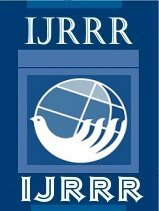|
Mohd Ibrahim Chaupdar
Rakesh Goyal
Dilip Agrawal
Mohit Khandelwal
Keywords:
RP-HPLC, Rosuvastatin Calcium, Impurities, Guidelines, Symmetry.
Abstract:
The present work is aimed at development and validation of HPLC method which is simple, specific, precise, and accurate for estimation of Rosuvastatin Calcium and its process-related impurity in bulk and pharmaceutical dosage forms. Extensive literature survey revealed no method for estimation of the above said. The characterization of synthesized impurities by using FTIR, NMR and MS. The RP-HPLC method was developed according to ICH Q2B guidelines for quantitation of impurity in bulk and formulations. The method was validated as per ICH guidelines. The method was found to be linear, precise, accurate, robust and rugged.
The present study focuses on the various steps, parameters involved in HPLC condition. Various applications of this system also discussed. HPLC process development is important in case of drug discovery, drug development and pharmaceutical products. It can be adopted apparently for routine quality control study of research and formulation tests. The method is carried out on a Symmetry C18 (4.6 mm ID × 150 mm, 5 µm, Make: XTerra) with a mobile phase consisting of acetonitrile and potassium dihydrogen phosphate buffer of pH = 4.0 in the ratio 65:35 volume/volume at a flow rate of 0.7 mL/min. The detection of eluted components is carried out at a wavelength of 216 nm. The retention time of Rosuvastatin Calcium is found to be 2.647 min. The developed method is validated in terms of accuracy, precision, linearity, limit of detection, limit of quantization. The linearity limits, LOD and LOQ of the developed method are found to be 10-50, 0.052 and 0.171 µg mL-1 , respectively. The developed method is found to be simple, fast and economic and hence it can be used as an alternative method in quality control.
|
|

International Journal of Recent Research and Review

ISSN: 2277-8322
Vol. XVII, Issue 1
March 2024
|
 PDF View
PDF View
PUBLISHED
March 2024
ISSUE
Vol. XVII, Issue 1
SECTION
Articles
|


